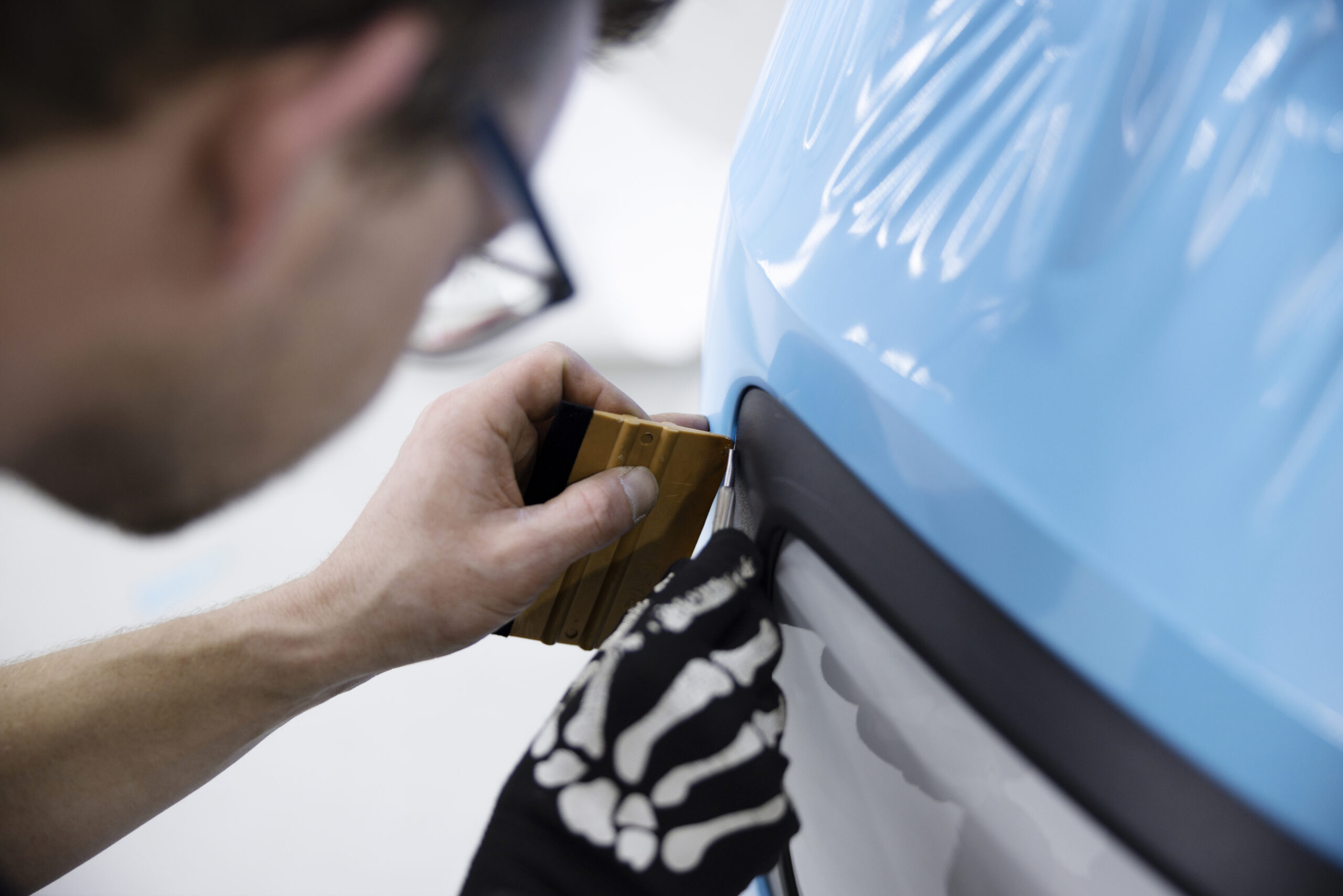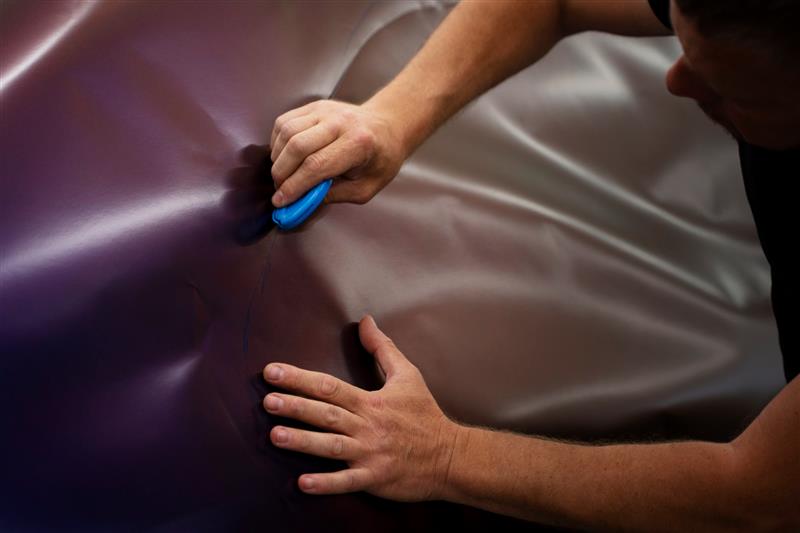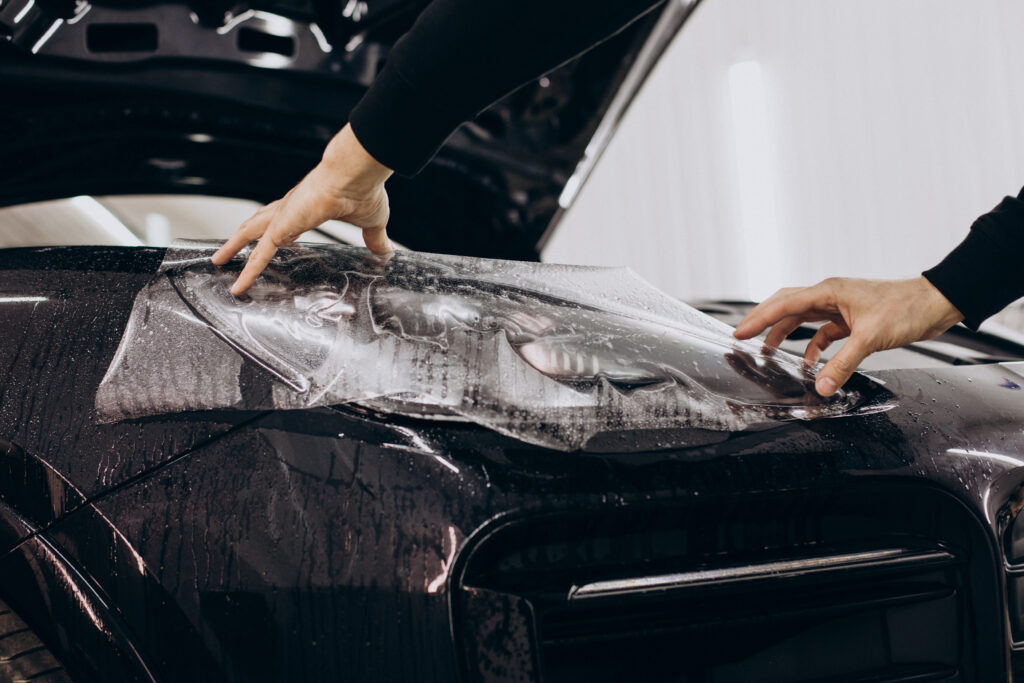Colorado offers drivers breathtaking vistas, but those scenic miles come with unique environmental threats that can quickly mar a vehicle’s exterior. From Rocky Mountain switchbacks to downtown Denver commutes, motorists encounter everything from fierce spring hail and corrosive winter road salt to harsh summer UV rays. Maintaining factory-fresh paint requires more than routine washes—it requires robust, proactive defense. Paint protection film (PPF) stands out as a game-changing safeguard. As a result, it is built to defend your car year-round.
At Auto Image 360, a Denver-based leader in automotive care with more than two decades of collective expertise, we grasp these regional perils deeply. Serving communities like Greenwood Village, Parker, Centennial, and the wider Denver area, we’ve witnessed PPF’s profound effects on countless vehicles. This in-depth guide examines how paint protection film aids Colorado drivers in averting year-round damage. We’ll uncover its inner workings, advantages, application methods, and practical uses, tackling frequent inquiries such as “Does PPF justify the expense for everyday drives?” and “How resilient is it to Colorado’s erratic climate?” By the conclusion, you’ll possess the insights to determine if PPF is the essential upgrade for your driving needs.
What is Paint Protection Film?
Paint protection film consists of a cutting-edge, clear polyurethane sheet bonded to a vehicle’s painted areas. Commonly referred to as a “clear bra” for its initial role in shielding the front fascia from insects and road grit, PPF has advanced into a versatile, all-encompassing defender. This nearly undetectable layer conforms precisely to your automobile’s curves while forming a tough shield that doesn’t compromise the original aesthetic.
In contrast to fleeting options like waxes or ceramic sealants that merely coat the surface, PPF delivers a more substantial, vinyl-esque defense optimized for shock absorption. It intercepts impacts from highway hazards, averting scratches, chips, and swirl patterns from compromising the base coat. Auto Image 360, as certified installers of premium brands like XPEL, employs films boasting exceptional transparency, guaranteeing your ride’s hue and luster stay authentic.
For locals in Colorado, this extends beyond mere looks; it’s a commitment to endurance. A lone chip from a flung stone on I-70 might spawn rust if ignored, particularly amid the state’s temperature swings that hasten deterioration. PPF intervenes as a forward-thinking strategy, not only upholding visual appeal but also enhancing market worth. Automotive sector analyses indicate that pristine exteriors can elevate resale figures by as much as 10 percent, rendering PPF a prudent fiscal move for those eyeing future sales or upgrades.
The Unique Challenges of Driving in Colorado
Colorado’s multifaceted weather is both a boon and a burden; the altitudes that yield awe-inspiring vistas also subject cars to severe stresses, challenging even resilient finishes. Grasping these obstacles is vital to appreciating why paint protection film is especially advantageous here.
Harsh Winters and Road Salt
Colorado winters prove merciless, with frigid temps and copious snows coating thoroughfares from Fort Collins southward to Colorado Springs. The Colorado Department of Transportation scatters vast quantities of salt and brine to melt ice, a tactic that, while lifesaving, infamously corrodes paint and spurs rust. Salt granules burrow into clear coats, inflicting tiny scratches that erode the sheen progressively.
Commuters traversing icy routes like Loveland or Monarch Passes face nonstop exposure. Even city arteries in Denver carry salt remnants well into spring. Absent safeguards, this necessitates expensive fixes. PPF serves as a disposable barrier, warding off salt and pollutants while facilitating straightforward cleansing. Its water-repelling traits, boosted via ceramic pairings, permit winter filth to rinse away, curbing enduring harm.
Intense Summers and UV Exposure
After winter, Colorado’s high-altitude sun is intense—UV levels are 20 percent higher than sea level. This sun bleaches paint, damages clear coats, and cracks surfaces, especially on dark colors.
Extended jaunts to sites like Mesa Verde or Great Sand Dunes mean prolonged solar assault, worsened by airborne dust and allergens that fuse to panels. PPF’s UV-blocking makeup thwarts 99 percent of damaging wavelengths, staving off fading and upholding that new car gleam. For SUV-toting families or truck-driving explorers, this fortification keeps exteriors lively post-adventure.

Hail Storms and Sudden Impacts
Hail warrants mention in any Colorado motoring discussion. The Front Range, including Denver, faces some of America’s worst hail, with storms hurling golf-ball-sized pellets. In 2023, hail caused over $2 billion in state auto damage, according to insurers.
These abrupt assaults pummel hoods, crack glass, and fracture paint without mercy. Though full coverage insurance offsets repairs, out-of-pocket costs and delays mount. PPF won’t halt grave dents but shines in softening surface blows. At up to 8 mils thick, it cushions lesser hail hits, lessening chip and scratch depth. In storm-vulnerable spots like Aurora or Littleton, this buffer converts disasters into trifles.
Road Debris on Mountain Highways
Colorado roads have rocks, debris, and animal traces, especially on routes like U.S. 285 or Highway 24. High speeds make small objects dangerous. Trucks from mountain mines add to this by kicking up bigger debris.
PPF’s shock-absorbent build suits these perils. Covering prone spots like bumpers and hoods, it rebounds projectiles and preserves paint. This is critical for trail blazers near Boulder or Jeep pilots on crags, where mars are unavoidable without preemptive cover.
How PPF Provides Year-Round Protection
PPF’s strength lies in its layered defense. Rather than one fix, it adapts to Colorado’s cyclic demands. Here’s how it secures your wheels.
Protection Against Road Debris and Chips
Every mile you drive exposes your car to flying debris. PPF’s thermoplastic material is designed to flex and absorb impacts. Thermoplastic means it softens when heated and can return to its original shape. This quality lets the film take the brunt of damage, offering much more protection than just paint alone and lasting for years.
Locally, this curtails shop visits. Envision summiting Vail Pass sans anxiety over gravel barrages scarring your nose cone; PPF renders such serenity routine.
UV and Environmental Resistance
Physical perils aside, elements like acidic downpours, avian waste, and arboreal resin launch chemical offensives. PPF’s neutral facade deflects these, halting pits and blotches. UV suppressors filter nearly all injurious beams, per sector benchmarks, sustaining vibrancy across sun-soaked miles.
This wards off oxidation as well, which often occurs in dry areas with humidity below 30 percent. By sealing the surface layer (the substrate), paint protection film (PPF) slows down material deterioration, allowing vehicles to age gracefully.
Self-Healing Technology
A hallmark of contemporary paint protection film (PPF) is self-repair. Light scratches from drive-thrus or faint surface scuffs mend themselves via heat; sunlight or warm water are often enough. This protective layer, in XPEL film types, restores clarity without needing special technology, reducing costs.
In our fluctuating clime, where de-icing dawns yield to sunny noon, it excels. Post snow scrub swirl? Vanished by midday. Such ease suits harried Parker pros or Centennial kin shuttling squads.
Types of Paint Protection Film Available
PPF variants abound, selection hinging on ride ethos and habits. Auto Image 360 stocks choices suiting Colorado tastes, from polished town cars to trail-toughened rigs.
Clear Gloss Finish
The staple, gloss PPF amplifies innate luster while cloaking unseen. Clarity endures sans tinting or clouding. A 10-year pledge assures endurance, suiting interstate regulars craving shield sans style shift.
It thrives in conspicuous realms, rimming borders for fluid guard against peak ascents.
Satin Finish for a Subtle Upgrade
Seeking matte allure? Satin PPF imparts plush, light scattering tactility for upscale restraint. It reworks shines to suave sheens sans forgoing fortitude; prime for factory matt rarities or low-key haulers.
Favored by Greenwood Village speedsters, it mirrors hues impeccably, mirroring gloss in mend and ray resistance. A custom hit for mod scenes, it captivates sans upkeep of faux coatings.
The Installation Process at Auto Image 360
PPF procurement is simplified by the pros. Our Greenwood Village XPEL pros follow rigorous processes for impeccable outcomes. It begins with a free vehicle assessment and a discussion of options.
Preparation is essential: We clean and decontaminate the vehicle to eliminate imperfections. Essential software helps us create tailored film templates for each model and section, such as facias and sides. Heat bonding ensures a seamless fit, and edges are tucked to prevent lifting.
Depending on coverage from partial kits to full wraps, installation usually takes two to three days to minimize downtime. Climate control ensures the highest standards throughout, and our team inspects every detail before returning your vehicle. Our gallery showcases completed work, from daily drivers to performance vehicles.
This attention to detail builds trust with communities from Lone Tree to Englewood. Our installations are not just protection, but reflect experienced craftsmanship.

Coverage Options Tailored for Colorado Drivers
Adaptability fits our varied turf. PPF tiers span pinpoint to panoramic, syncing guard to gait.
24-inch fronts hit hot zones like hood tips, apt for thrift flatlanders. Complete anterior sweeps flanks and noses, bordering for seamless versus I 25 flak; a hauler hallmark.
Supreme falls cloak all outsides, fending omnidirectional. Hail, hot Centennial luxes or Boulder bushwhackers opt this for utter calm.
Peruse our PPF service page for vehicle tuned tiers.
Combining PPF with Ceramic Coating for Enhanced Defense
PPF masters blow, but ceramic layering lifts it. Auto Image 360’s Ceramic Pro, a nano polymer, fuses to paint or film, birthing slick shields versus filth, chems, and thermals.
In state, it’s invincible: Film foils hits; ceramic shuns salt and silt for swift scrubs. Skip waxes; hose revives sheen. Users note prolonged purity, doubled scratch wards.
Doubters, view it thus: Film armors; ceramic gleams it. Merged, they craft climate-proof lasts.
Maintenance and Longevity of PPF
PPF charms via sparsity. Forsake polishes for pH mild lathers, shunning stiffs; though heals fix faux pas.
Our bone-dry drafts warrant edge peeks, but 10-year shield flaws. Prime lasts 7 to 10 years, trumping shorties. Ceramic cuts chores, repulsing plagues.
Folks fretting yellowing solarly? UVs nix it. Dirt trap? Repel rules. These ease PPF for rushed locals.
Cost-Benefit Analysis: Is PPF Worth It for Colorado Drivers?
Funds matter, but PPF yields strong. Kits launch low, wholes heftier; yet dwarf fixes. Hail pock hundreds; annual chips top thousands. PPF preempts, recouping in 2 to 3 cycles.
Trades gain: Guards hike bids, prizing fresh facades. Mid-range rig nets substantial back. Claim dips save more. Versus wax’s frequent week spans, PPF’s seasonal stamina wins the long haul.
Query: Alt costs? Sealants lag; PPF endures. Fiscal for foresightful.
Conclusion: Secure Your Drive with PPF Today
Our paths crave grit; PPF supplies sans peer. Salt to shine, it averts seasonal scourges, hoarding allure, worth, and wits. Urban or upland, it flips frailties to forces.
Set to sense shift? Book gratis at Auto Image 360. Hit our get a quote page to shield or pop Greenwood Village. Storm skip; steel up, steer sure all annum.


